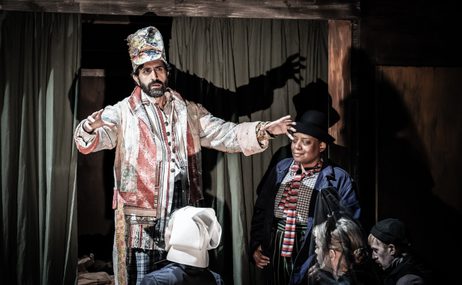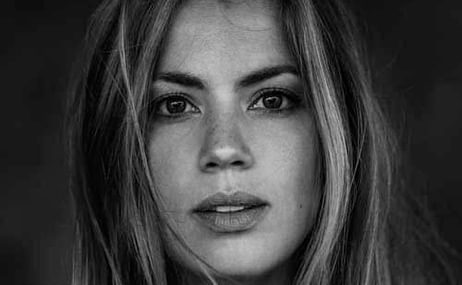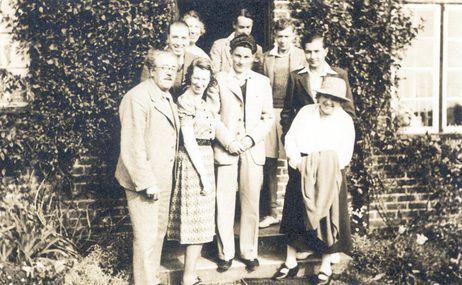Presented by Lucy Walker
Billy Budd is Britten’s sixth stage work and his second ‘grand’ opera (after Peter Grimes). He composed it while living in Crag House in Aldeburgh, which has a beautiful view of the north sea. The opera is based on a novella by Herman Melville – like its perhaps more well-known Moby Dick, Budd is a seafaring tale. It concerns Billy, a young, naïve sailor, whose tragedy is to lash out at the wrong moment accidentally killing the Master-at-Arms John Claggart. The cerebral Captain Vere has to make the decision to either spare Billy, or abide by naval law and have him hanged. His decision to adhere to the law haunts him for the rest of his life: the opera is told in ‘flashback’ by a much older Vere, reflecting on this incident many years later.

Benjamin Britten with his sister Barbara seated and (l-r) EM Forster, Arthur Oldham and Britten standing behind in the garden of Crag House, Aldeburgh. Photographer: unidentified.
The opera has a number of remarkable features. It features, very unusually, an all-male cast, and the much-fêted ‘beauty’ is a male character, admired by all the other males. The Master-at-Arm’s feelings towards the beautiful Billy seem quite clearly to reflect a longing he can neither admit nor abide. The male-male desire portrayed in this opera is remarkable given that it was first staged more than 15 years before the partial decriminalisation of homosexuality. EM Forster, who co-wrote the libretto with Eric Crozier, knew very well how problematic it was to portray homosexuality in a work of art – his own gay novel Maurice was deliberately kept unpublished until after his death.

Theodor Uppman as Billy in the first performance of ‘Billy Budd’, December 1951.
Musically, the opera has an extraordinary range: from the whole chorus and orchestra belting out sea shanties at full volume, to exquisite ‘chamber’ passages for just a couple of instruments, to heartfelt arias, all suffused with Britten’s characteristically ambiguous tonality. In particular, major and minor keys are juxtaposed with each other right from the start – a rocking, slightly eerie motif for muted strings accompanying Captain Vere’s troubled recollections. It is an opera of great power and emotional resonance, especially in performance. It was originally in four acts, each with an interval in between: the later revision into two acts, with only one interval, allowed the claustrophobic, inescapable nature of life at sea to be rendered even more vividly to the audience.
BANNER IMAGE ABOVE: RODERICK WILLIAMS (BILLY BUDD), BRINDLEY SHERRATT (JOHN CLAGGART), PETER SAVIDGE (MR REDBURN), DEAN ROBINSON (MR FLINT), CALLUM THORPE (LIEUTENANT RATCLIFFE), DANIEL NORMAN (RED WHISKERS) AND TIM OCHALA-GREENOUGH (ARTHUR JONES). PHOTOGRAPHER: BY SAM MURRAY-SUTTON © SNAPE MALTINGS.
Watch more

74th Aldeburgh Festival
09 – 25 June 2023
A Song at The Red House: 'Tell me the Truth About Love', by Benjamin Britten
Soprano Elise Caluwaerts performs one of Britten's cabaret songs, with a witty text by WH Auden. Accompanied by Lucy Walker on Britten's Steinway piano…
Work of the Week 24. Violin Concerto
Presented by Roger Wright
